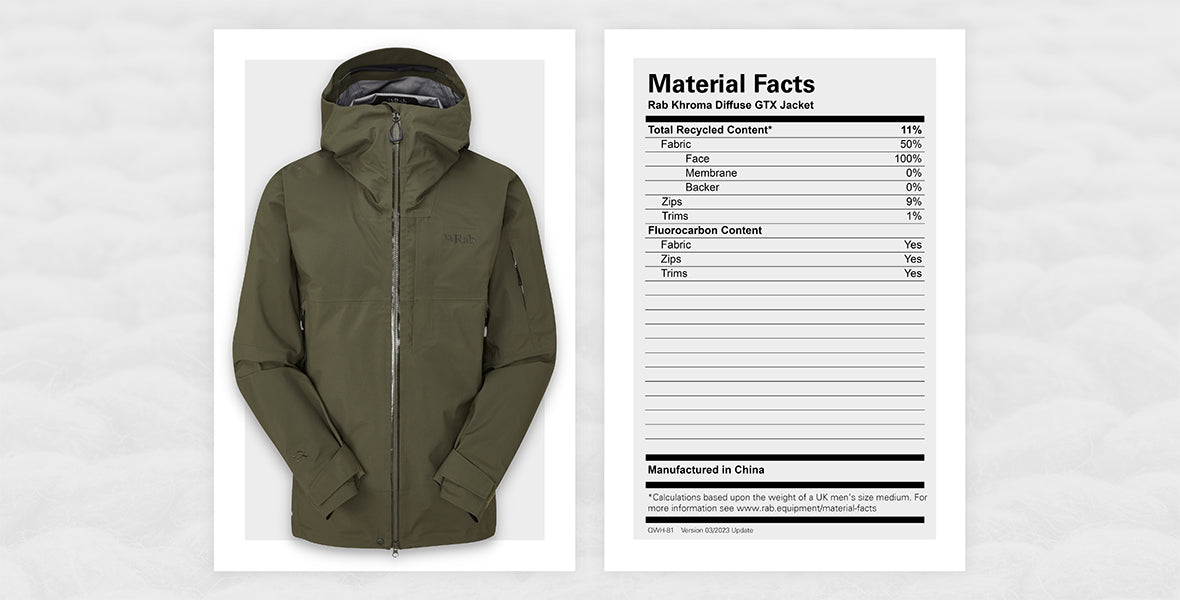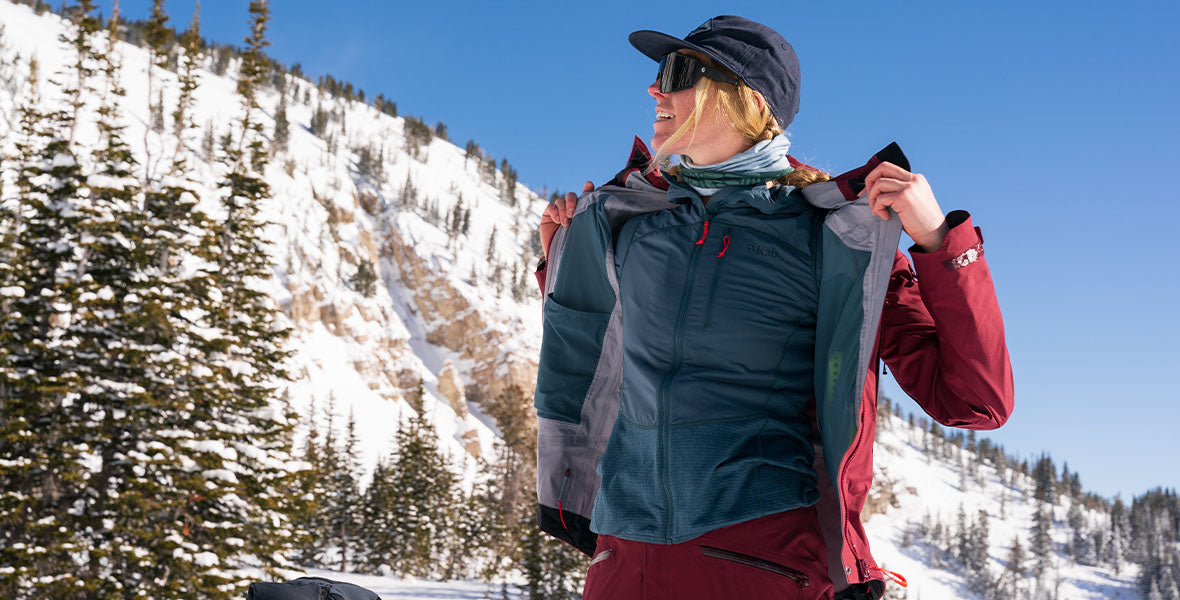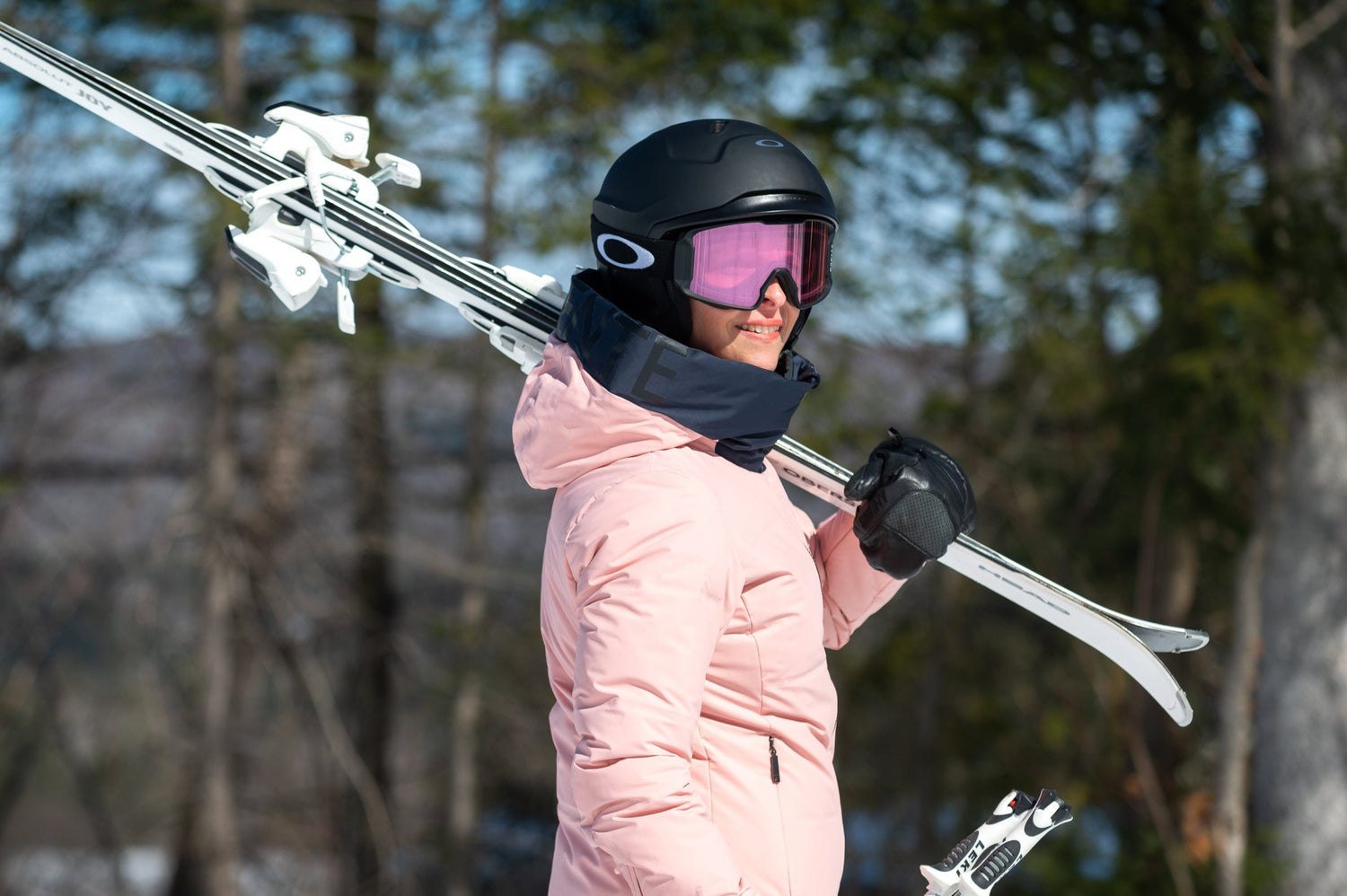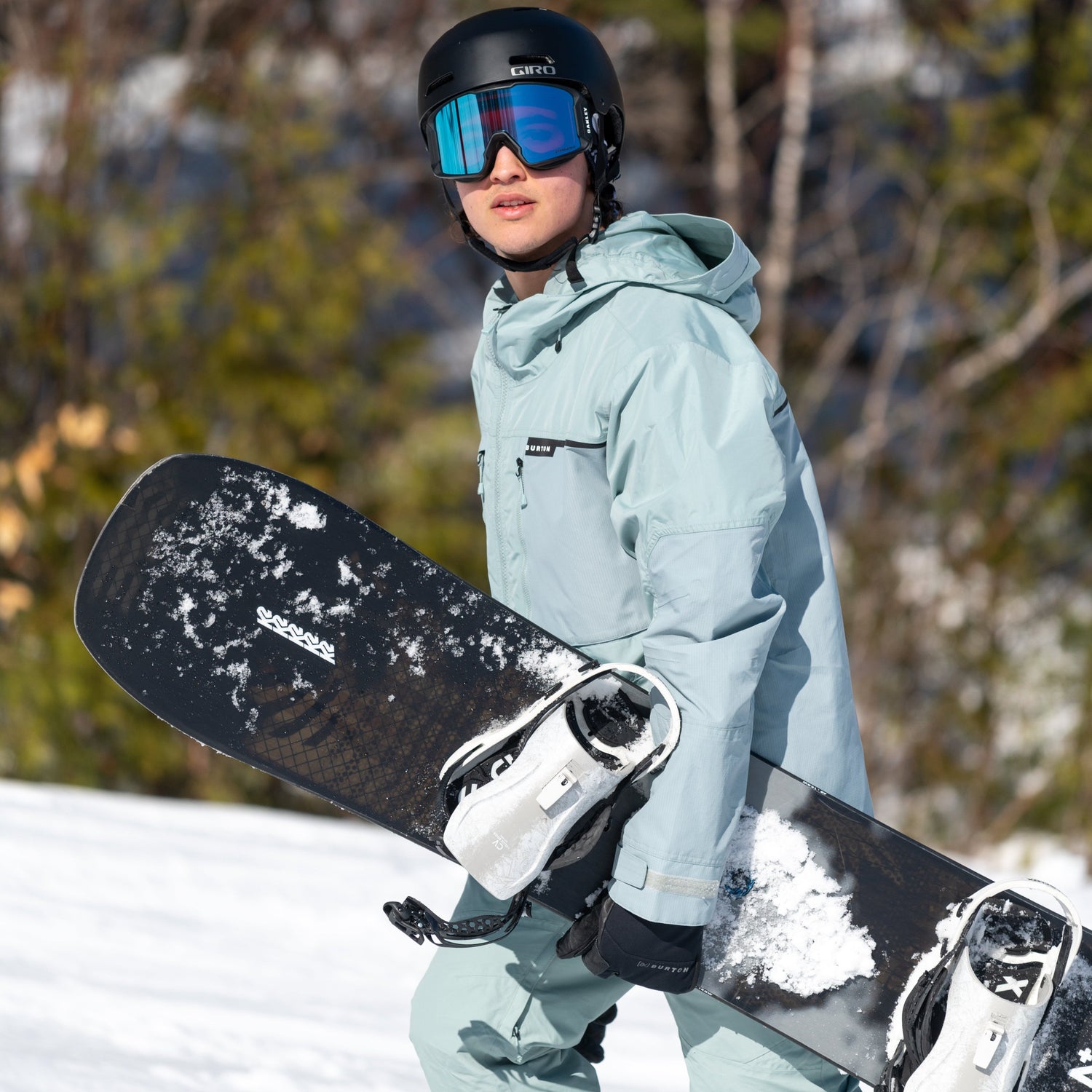Oberson x Rab
_____________________________

1. How to Read Material Facts
Rab products’ material facts are presented in a table, just like the nutrition facts tables printed on the packaging of the food we eat. But instead of providing the information about what you’re eating, you’ll have the lowdown on what you’re wearing. How’s that for a stroke of genius?
The information in the material facts is divided into three parts: recycled content, perfluorocarbons (PFCs/PFAS) use and manufacturing country of origin.
If you look at the Material Facts table, you’ll see the percentage of recycled material contained in each part of the garment: fabric, down, zippers and trim (i.e., cord locks, pulls, pocket linings, logos, rigid parts of hoods, draw cords and eyelets). This gives you accurate information about what you are buying and will wear.
2. Analyze Textile Materials
The various textile materials in outdoor clothing are either made of synthetic or natural materials. However, in recent years, many garments have been designed with recycled textiles and insulation, which reduces waste in the manufacture of outdoor items. In fact, by 2022, Rab was recycling 66% of fabrics and 46% of all down purchased.
Natural materials, such as merino wool, are very durable, odour-resistant and soft to the touch. It’s a material of choice, especially for base layers. In addition, down insulation is the option that offers the best heat-to-weight ratio. Plus, you can now check if the down is RDS certified, which ensures its traceability.
Synthetic materials, such as polyester, nylon, spandex, acrylic and polyamides, are all derived from petroleum, an industry with a major environmental impact. However, these materials can be recycled and reused to limit the impact on Mother Nature.

3. Perfluorocarbon Use
Perfluorocarbons (PFCs) are synthetic chemicals that make clothing waterproof. This means they’re incorporated in most outdoor clothing. On the one hand, they lengthen products’ lifespans due to their high-performance properties, but on the other, they’re extremely harmful to the environment.
However, 80% of Rab products have been designed PFC-free for winter 2023 with the goal of eliminating them from production by 2024.
4. Select the Right Clothes for Your Activity
To reduce how often you buy outdoor clothing, ideally you should choose the right clothes based on the sports you engage in. For example, a jacket designed for rock climbing or mountaineering will not necessarily have the same technical or manufacturing characteristics. The goal is to be able to keep your clothes as long as possible because you wear them in the right conditions.
The multilayer system is an excellent option that can be used for several types of activities, from downhill skiing to hiking.

5. Look at the Place of Manufacture
Place of manufacture is a key aspect to consider. Other than environmental factors, the social impact of clothing production can be equally disastrous. Fair Wear certification can assure you that your garment’s production adheres to human rights standards and fair working conditions.
Proudly a leader at the Fair Wear Foundation, Rab takes concrete actions to constantly improve working conditions at various production sites.
6. Check Eco-Friendly Certifications
In recent years, eco-friendly certifications have become more and more part of the decor in clothing manufacture. These certifications determine whether specific social and environmental criteria have been met during product manufacturing.

7. Care for Outdoor Clothing Properly
Like all your clothes, jackets, pants and insulation layers should be washed regularly. This maintains their waterproof and breathable properties so that they keep performing well over the years. To learn how to properly wash and dry your technical clothing, read How to Care for Technical Clothing.
8. Products' End of Life
Rab clothing is designed to limit waste during production and prevent garments from ending up in a landfill. Like any item, they have a lifespan based on use and maintenance. Clothes can also sometimes be repaired.
The Rab Repair team in the UK carries out almost all repairs on products returned under warranty. In addition, the Rab website now offers several spare parts so you can repair your gear yourself. Furthermore, the Rab service centre in Montreal also houses a Rab Repair team serving Quebec.
In 2022, more than 15,000 items from Europe and North America were cleaned and repaired so their owners could continue enjoying them without having to purchase a new item.



